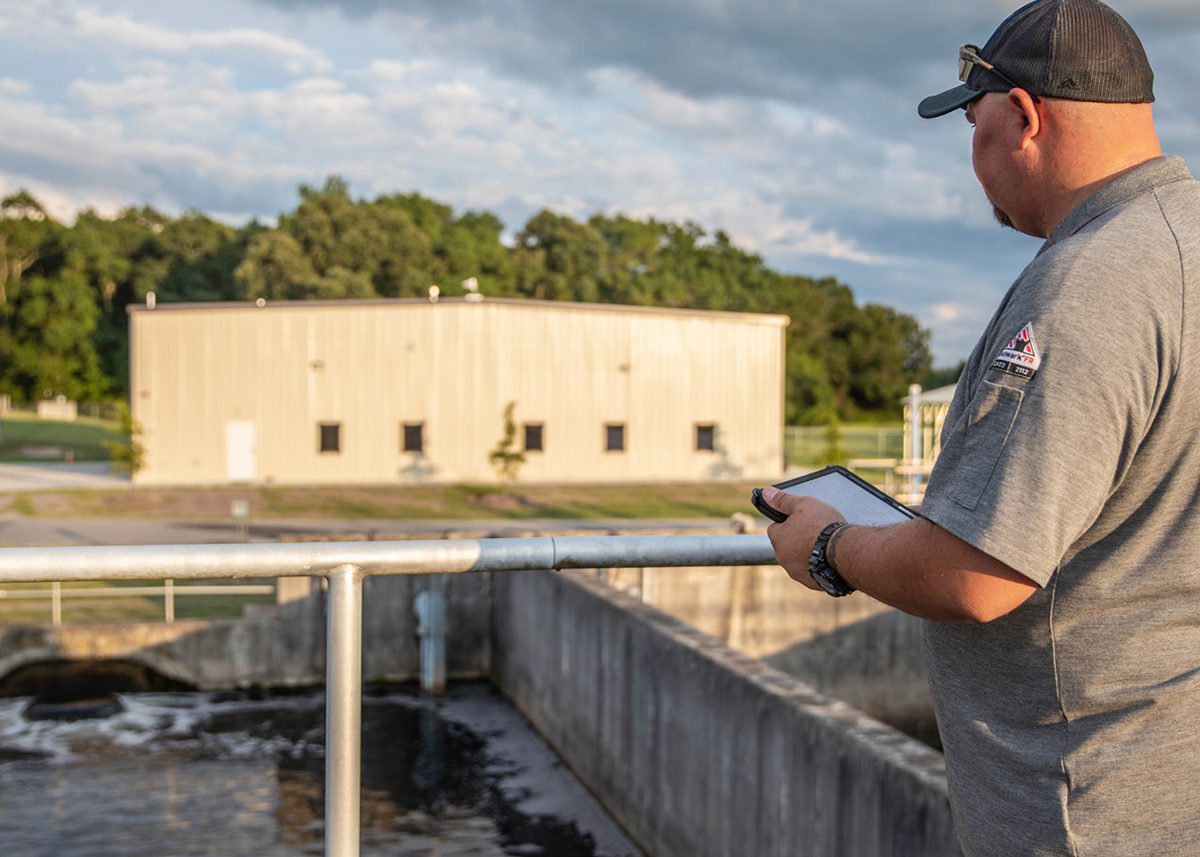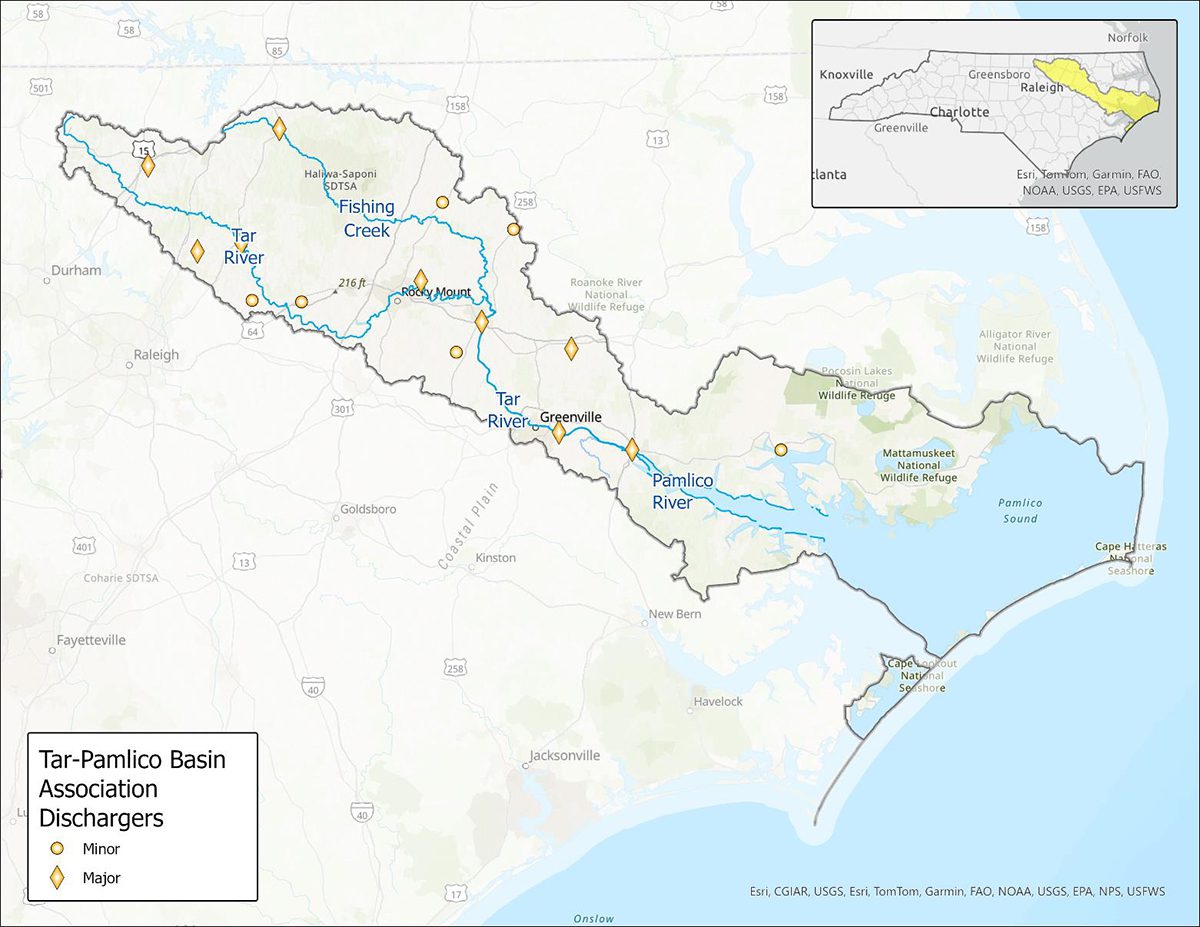
The Environmental Management Commission has advanced proposed changes that would codify an existing, long-term agreement with a coalition of wastewater dischargers in the Tar-Pamlico River Basin.
The changes mainly include incorporating into the existing Tar-Pamlico wastewater discharge requirements rule the 1990 agreement between the state and the 15 municipal wastewater systems that make up the Tar-Pamlico Basin Association. The agreement is set to expire in 2025.
Supporter Spotlight
When the commission that adopts rules that protect the state’s air and water quality met Thursday in Raleigh, members voted unanimously to send the proposed amendments out for public comment early next year.
Since the 1980s, excessive amounts of nutrient-related pollution like nitrogen and phosphorus have been discharged into the Pamlico estuary, creating low oxygen levels, extensive fish kills and harmful algal blooms.
To address these water quality problems, the commission in 1989 designated the basin as nutrient-sensitive waters, and the state developed the Tar-Pamlico nutrient strategy, which went into effect in 2000-2001.
The strategy is a set of rules designed to “equitably regulate sources of nutrient pollution in the basin including wastewater, stormwater, and agricultural nutrient sources,” according to the North Carolina Department of Environmental Quality’s nutrient strategy website. The rules also protect riparian buffers, mandate training for professionals that apply fertilizer, and seek to reduce nitrogen levels in the estuary by 30% and cap phosphorus levels at the 1991 baseline.
John Huisman of the Nonpoint Source Planning Branch of the Division of Water Resources explained Thursday that the agreement signed in 1990 by the commission, the association, Division of Soil and Water Conservation and a few environmental groups established collective annual caps for nutrients for the association and ways to fund offset for exceeding total allocations, if necessary. The agreement was renewed and revised in 1995, 2005 and the current agreement is from 2015 to 2025.
Supporter Spotlight
“The basic framework of that agreement was it established these end-of-pipe nitrogen and phosphorus caps for the association,” Huisman said. Adding that, “as long as the association remains under those group caps all the individual members are deemed compliant with their individual allocations.”
In 1997, the commission adopted a “non-association wastewater rule” that established a regulatory pathway for new and expanding dischargers not in the association, Huisman said.
Following that in 2000-2001, the nonpoint-source rule component of the Tar-Pamlico management strategy was adopted.
Point-source pollution is that which is discharged directly from a facility by a pipe, ditch or similar conduit into a water body. Nonpoint-source pollution, on the other hand, comes from stormwater runoff that collects and carries contaminants more broadly across surfaces to rivers and streams.
“Collectively, between the agreement, the non-association wastewater rule, and these nonpoint-source rules, this makes up the Tar-Pamlico Nutrient Management Strategy,” Huisman added.
The current wastewater rule adopted in 1997 and then revised in 2020 addresses new and expanding facilities and association members and provides regulatory path for allocating trading in nutrient offsets and updated treatment standards.
“I do want to impress upon you, we’ve had this agreement in place now for almost 30 years, and there’s been steady compliance with those nutrient caps,” Huisman said, with the association remaining below their nitrogen and phosphorous caps. “They’re currently at 70% of their nitrogen cap and 68% of phosphorus cap, and they’ve been holding steady there at those percentages for the past decade or so.”
The “biggest players” in the association are Rocky Mount and Greenville, with permitted flows of 21 million gallons per day, and 17.5 million gallons per day, respectively. Of the remaining members, nine vary from about 1 to 5 million gallons per day, Huisman said.
Their total permitted flow is 62 million gallons per day, and their current flow is at about half the permitted total, hovering around 30 to 32 million gallons per day.
Collectively, the 15 members over the past 15-20 years represent 98.7% of the permitted flow in the basin.
Definition of a rule
Codifying the agreement is important, Huisman said, because in recent years, the Division of Water Resources had faced increased pressure to ensure that any requirements that meet the definition of a rule should be placed within a rule, rather than “an agreement or some sort of policy document.”
Codifying the existing requirements, according to the fiscal analysis, would also provide better clarity, a way to avoid potential legal challenges, and an opportunity to modernize the language.
Huisman said that the division, throughout its two-year process of drafting the amendments, had worked in collaboration with the Tar-Pamlico Basin Association on the proposed revisions.
The changes now heading to public comment add definitions of key words and from the agreement, discharge allocation numbers for nutrient and phosphorous for the association and its members, and flexibility with reserve allocations and with nutrient offset.

Tar-Pamlico Basin Association Executive Director Adam Waters told the commission that his group recognized the need to codify the agreement.
“We have been working with the division extensively over the past probably year and a half, and I think we have come to an agreement with the language that is in the proposed rule that best represents the association, and we are supporting it,” Waters said during the meeting.
Huisman reiterated that the division’s goal was to offset the water quality effects of any future discharge increase.
The 60-day public comment process is expected to take place in January and February, officials said. Based on comments received, division staff may make revisions and present the final rule for commission approval in May.








